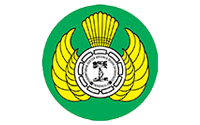Diagnostic Value of Magnetic Resonance Imaging Based Coracoid Morphology in Patients with Subscapularis Tears
Downloads
Background: This study investigates the association between subscapularis tendon tears and the anatomical characteristics of the coracoid process, as assessed by magnetic resonance imaging (MRI) and to determine the predictive cut-off values for significant measurements.
Methods: Patients who underwent surgery for rotator cuff injury between 2020 and 2024 were retrospectively reviewed. Those with a subscapularis tear were classified as Group 1, while those with an intact subscapularis were classified as Group 2. MRI images were analyzed to measure axial and sagittal coracohumeral distance (axCHD, sagCHD), coracoid overlap (CO), and coracoid angle (CA). The diagnostic utility of these parameters was assessed using receiver operating characteristic (ROC) curve analysis.
Results: A significant association was found between subscapularis tear and axCHD, sagCHD, and CO measurements. Among these, sagCHD demonstrated the strongest predictive power, with an optimal threshold of 9.5 mm, a sensitivity of 77.8% and a specificity of 80.4%.
Conclusion: Our study demonstrated that decreased axCHD and sagCHD, and increased CO, are associated with subscapularis tears. The intracoracoid angle, however, does not appear to influence the incidence of subscapularis tears.
Fitzpatrick LA, Atinga A, White L, Henry PDG, Probyn L. Rotator cuff injury and repair. Semin Musculoskelet Radiol. 2022;26(5):585–96.
Arrillaga B, Miguel-Pérez M, Möller I, Rubio L, Blasi J, Pérez-Bellmunt A, Ortiz-Sagristà JC, Ortiz-Miguel S, Martinoli C. Human shoulder anatomy: new ultrasound, anatomical, and microscopic perspectives. Anat Sci Int. 2024;99(3):290–304.
Park HB, Gwark JY, Na JB. Risk factors of chronic subscapularis tendon tear. Clin Shoulder Elb. 2022;25(4):257–64.
Longo UG, Risi Ambrogioni L, Candela V, Berton A, Carnevale A, Schena E, Denaro V. Conservative versus surgical management for patients with rotator cuff tears: a systematic review and meta-analysis. BMC Musculoskelet Disord. 2021;22(1):50.
Yubran AP, Pesquera LC, Juan ELS, Saralegui FI, Canga AC, Camara AC, Valdivieso GM, Pisanti Lopez C. Rotator cuff tear patterns: MRI appearance and its surgical relevance. Insights Imaging. 2024;15(1):61.
Matsushita R, Yokoya S, Negi H, Matsubara N, Akiyama Y, Adachi N. Evaluation of subscapularis tendon tears of the anterosuperior aspect using radial-sequence magnetic resonance imaging. JSES Int. 2021;6(1):97–103.
Asal N and Şahan MH. Radiological variabilities in subcoracoid impingement: coracoid morphology, coracohumeral distance, coracoglenoid angle, and coracohumeral angle. Med Sci Monit. 2018;24:8678–84.
Reichel T, Herz S, Tabbakh ME, Bley TA, Plumhoff P, Rückl K. Less than 9.5-mm coracohumeral distance on axial magnetic resonance imaging scans predicts for subscapularis tear. JSES Int. 2021;5(3):424–9.
Lafosse L, Jost B, Reiland Y, Audebert S, Toussaint B, Gobezie R. Structural integrity and clinical outcomes after arthroscopic repair of isolated subscapularis tears. J Bone Joint Surg Am. 2007;89(6):1184–93.
Samilson RL, Prieto V. Dislocation arthropathy of the shoulder. J Bone Joint Surg Am. 1983;65(4):456–60.
Tang JB, Giddins G. Why and how to report surgeons' levels of expertise. J Hand Surg Eur Vol. 2016;41(4):365–6.
Balke M, Banerjee M, Greshake O, Hoeher J, Bouillon B, Liem D. The coracohumeral distance in shoulders with traumatic and degenerative subscapularis tendon tears. Am J Sports Med. 2016;44(1):198–201.
Çetinkaya M, Kaptan AY, Ulucaköy C, Orhan Ö, Topal M, Ayanoğlu T, Kanatlı U. Is it the subcoracoid impingement or the subacromial impingement that tears the subscapularis tendon? A comparison of MRI findings of the operated and healthy shoulders of the patients. Turk J Med Sci. 2023;53(1):273–81.
El-Amin SF 3rd, Maffulli N, Mai MC, Rodriguez HC, Jaso V, Cannon D, Gupta A. Coracoid impingement and morphology is associated with fatty infiltration and rotator cuff tears. J Clin Med. 2022;11(9):2661.
Yu JF, Xie P, Liu KF, Sun Y, Zhang J, Zhu H, Chen YH. Identification of diagnostic magnetic resonance imaging findings in 47 shoulders with subcoracoid impingement syndrome by comparison with 100 normal shoulders. Med Sci Monit. 2022;28:e936703.
Mi Y, Lin Y, Cheng B. Magnetic resonance imaging based coracoid process morphology and its associations with isolated subscapularis tendon tears in Chinese patients. Jt Dis Relat Surg. 2024;35(2):267–75.
Watson AC, Jamieson RP, Mattin AC, Page RS. Magnetic resonance imaging based coracoid morphology and its associations with subscapularis tears: a new index. Shoulder Elbow. 2019;11(Suppl 1):52–8.
Leite MJ, Pinho AR, Sá MC, Silva MR, Sousa AN, Torres JM. Coracoid morphology and humeral version as risk factors for subscapularis tears. J Shoulder Elbow Surg. 2020;29(9):1804–10.
Dugarte AJ, Davis RJ, Lynch TS, Schickendantz MS, Farrow LD. Anatomic study of subcoracoid morphology in 418 shoulders: potential implications for subcoracoid impingement. Orthop J Sports Med. 2017;5(10):2325967117731996.
Kucukciloglu Y, Aydın D. Relationship between radiological measurement of subcoracoid impingement and subscapularis tendon lesions. Clin Orthop Surg. 2022;14(3):441–9.
Copyright (c) 2025 (JOINTS) Journal Orthopaedi and Traumatology Surabaya

This work is licensed under a Creative Commons Attribution-NonCommercial-ShareAlike 4.0 International License.
- The author acknowledges that the copyright of the article is transferred to the Journal of Orthopaedi and Traumatology Surabaya (JOINTS), whilst the author retains the moral right to the publication.
- The legal formal aspect of journal publication accessibility refers to Creative Commons Attribution-Non Commercial-Share Alike 4.0 International License (CC BY-NC-SA).
- All published manuscripts, whether in print or electronic form, are open access for educational, research, library purposes, and non-commercial uses. In addition to the aims mentioned above, the editorial board is not liable for any potential violations of copyright laws.
- The form to submit the manuscript's authenticity and copyright statement can be downloaded here.
Journal of Orthopaedi and Traumatology Surabaya (JOINTS) is licensed under a Creative Commons Attribution-Non Commercial-Share Alike 4.0 International License.



























 Journal Orthopaedi and Traumatology Surabaya (JOINTS) (
Journal Orthopaedi and Traumatology Surabaya (JOINTS) (